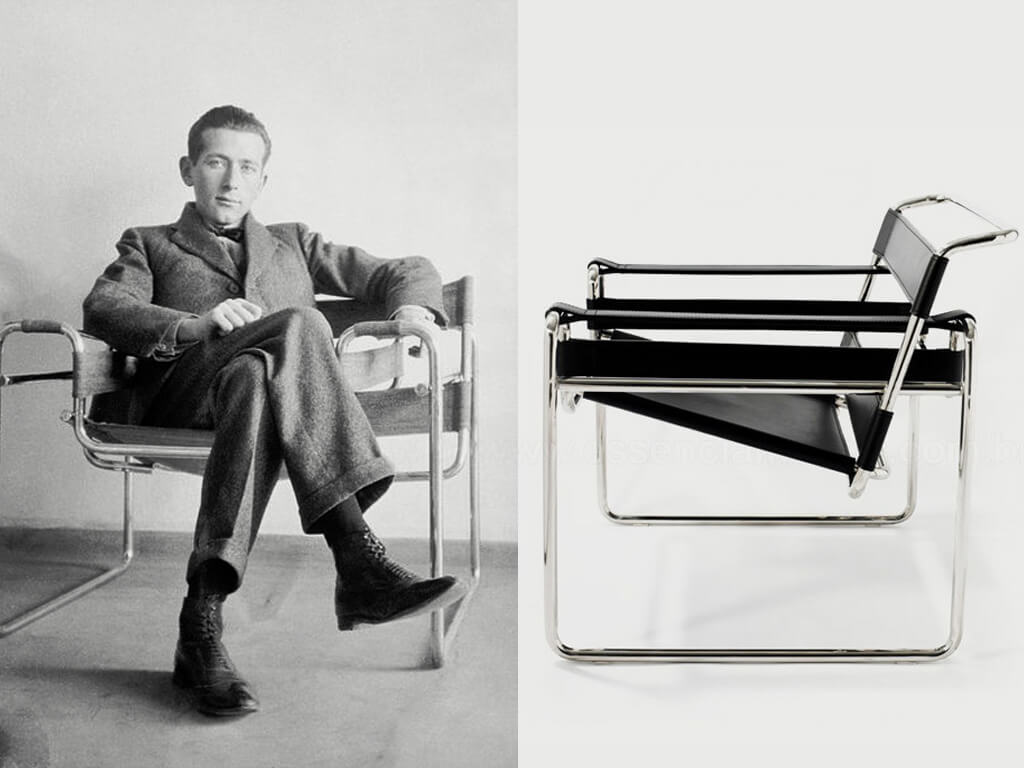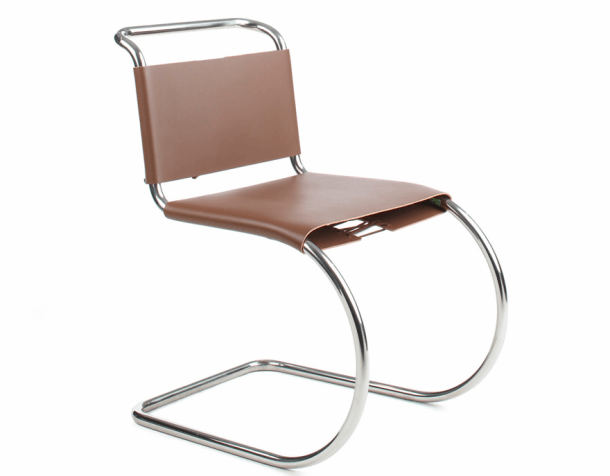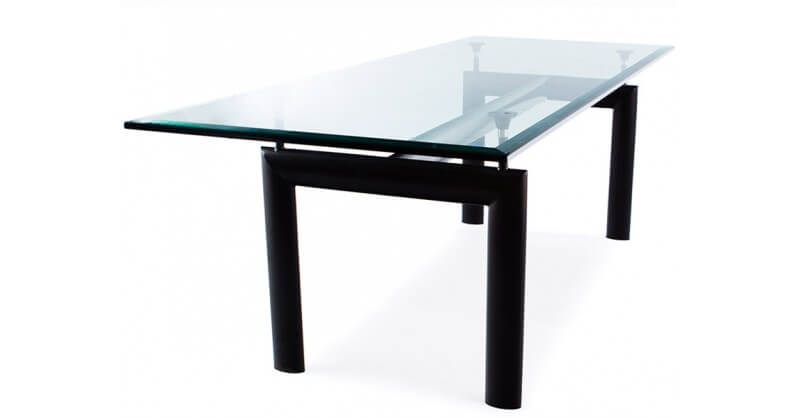The Impact of Bauhaus on Interior Design

Everyone knows that architecture directly interlinks with interior design. Throughout history, many artists have left behind their mark. And it’s in those very marks where we can trace the impact of Bauhaus on the world of interior design.
The furniture pieces that we browse today online or at stores have a history. They have origins and have changed over the years until today, where they have a different appearance to appease new trends. In other words, they’re the physical proof of evolution and ever-flowing ideas.
Everything changes to fit our needs, which was a fundamental concept for Bauhaus. They aimed to create designs and decor that worked well inside a home, creating finesse, elegance and originality.
A little historical context

Bauhaus was a school of design, architecture, craft and art founded by Walter Gropius in 1919 in Weimar (Germany). It was a professional art center where the greatest artists of the time studied and worked side by side.
All sorts of artists came to share their different ideas: painters, sculptors, architects and more. They only had one objective – to improve manual labor and try to create new products through creative processes.
Among the artist body, certain big names, such as Ludwig Mies van der Rohe, played a larger role in creating new interior designs that would improve everyday life and overall aesthetics.
— Architecture begins when engineering ends.–
Walter Gropius
More creative designs

The Bauhaus school principally aimed to connect fine arts with craftsmanship. Both parts were equally important. The following characteristics of Bauhaus explain the creative character of their work:
- Recuperation of artisan methods for architecture. The bottom line was that everything is related to everything. So no element should compete with another, because they are all art.
- They aimed to design creative yet functional objects for society. In other words, they wanted useful products that could be accessible to everybody.
- There’s a clear link to the industrial style. The designs are ultimately revolutionary that aim to bridge different characteristics and enhance creativity.
- An essential objective for Bauhaus was to design furniture that could work in homes. They made start changes in interior design to create beautiful spaces.
— Art itself cannot be taught.–
Walter Gropius
Chairs that made waves

Bauhaus produced many decor elements that you can still find in stores today. You’ve probably seen one of their products. Some examples include:
- Wassily chair: Marcel Breuer created the chair after finding inspiration in the structure of bicycles. The chair is made up of steel bars and stretched leather. It adapts to the body and aesthetically was a game-changer.
- MR 10: Mies van der Rohe designed this interesting chair that, at first, comes off as unstable. However, its big curved, footless structure is very comfortable and sturdy.
- Basculante chair: we can’t leave out the influential Le Corbusier. He was an artist that worked to flip the decor world upside-down. His chair presents different height levels between straight and slanted lines.
Functional tables with innovative designs

You can’t have a home that has chairs but lacks tables. Tables are essential for everyday life. Bauhaus artists wanted to change the concept of a table and seek new solutions. Some examples of their work include:
- Enrich Brendel’s collapsible table: this product saves consumers’ space and is very handy. It folds down into a rectangular side-table, adapting to any space.
- Eileen Gray’s E1027: this peculiar-looking side-table just might have been the most innovative of all. It only has one lateral support, leaving the inside empty. In addition, it uses a circular sheet of glass as the tabletop. The result is a very stylized design.
- Le Corbusier’s and Charlotte Perriand’s LC6: four legs hold up the table while four little rods with suction cups hold up a glass tabletop. The glass eliminates opacity and creates a light design.
In our post today, we’ve looked at several interesting examples of Bauhaus artists and the social impact they had. So if you’re thinking about furnishing your home, Bauhaus furniture pieces are a great option.
Everyone knows that architecture directly interlinks with interior design. Throughout history, many artists have left behind their mark. And it’s in those very marks where we can trace the impact of Bauhaus on the world of interior design.
The furniture pieces that we browse today online or at stores have a history. They have origins and have changed over the years until today, where they have a different appearance to appease new trends. In other words, they’re the physical proof of evolution and ever-flowing ideas.
Everything changes to fit our needs, which was a fundamental concept for Bauhaus. They aimed to create designs and decor that worked well inside a home, creating finesse, elegance and originality.
A little historical context

Bauhaus was a school of design, architecture, craft and art founded by Walter Gropius in 1919 in Weimar (Germany). It was a professional art center where the greatest artists of the time studied and worked side by side.
All sorts of artists came to share their different ideas: painters, sculptors, architects and more. They only had one objective – to improve manual labor and try to create new products through creative processes.
Among the artist body, certain big names, such as Ludwig Mies van der Rohe, played a larger role in creating new interior designs that would improve everyday life and overall aesthetics.
— Architecture begins when engineering ends.–
Walter Gropius
More creative designs

The Bauhaus school principally aimed to connect fine arts with craftsmanship. Both parts were equally important. The following characteristics of Bauhaus explain the creative character of their work:
- Recuperation of artisan methods for architecture. The bottom line was that everything is related to everything. So no element should compete with another, because they are all art.
- They aimed to design creative yet functional objects for society. In other words, they wanted useful products that could be accessible to everybody.
- There’s a clear link to the industrial style. The designs are ultimately revolutionary that aim to bridge different characteristics and enhance creativity.
- An essential objective for Bauhaus was to design furniture that could work in homes. They made start changes in interior design to create beautiful spaces.
— Art itself cannot be taught.–
Walter Gropius
Chairs that made waves

Bauhaus produced many decor elements that you can still find in stores today. You’ve probably seen one of their products. Some examples include:
- Wassily chair: Marcel Breuer created the chair after finding inspiration in the structure of bicycles. The chair is made up of steel bars and stretched leather. It adapts to the body and aesthetically was a game-changer.
- MR 10: Mies van der Rohe designed this interesting chair that, at first, comes off as unstable. However, its big curved, footless structure is very comfortable and sturdy.
- Basculante chair: we can’t leave out the influential Le Corbusier. He was an artist that worked to flip the decor world upside-down. His chair presents different height levels between straight and slanted lines.
Functional tables with innovative designs

You can’t have a home that has chairs but lacks tables. Tables are essential for everyday life. Bauhaus artists wanted to change the concept of a table and seek new solutions. Some examples of their work include:
- Enrich Brendel’s collapsible table: this product saves consumers’ space and is very handy. It folds down into a rectangular side-table, adapting to any space.
- Eileen Gray’s E1027: this peculiar-looking side-table just might have been the most innovative of all. It only has one lateral support, leaving the inside empty. In addition, it uses a circular sheet of glass as the tabletop. The result is a very stylized design.
- Le Corbusier’s and Charlotte Perriand’s LC6: four legs hold up the table while four little rods with suction cups hold up a glass tabletop. The glass eliminates opacity and creates a light design.
In our post today, we’ve looked at several interesting examples of Bauhaus artists and the social impact they had. So if you’re thinking about furnishing your home, Bauhaus furniture pieces are a great option.
All cited sources were thoroughly reviewed by our team to ensure their quality, reliability, currency, and validity. The bibliography of this article was considered reliable and of academic or scientific accuracy.
Droste, Magdalena: Bauhaus. 1919-1933, Berlín, Taschen, 1990.







